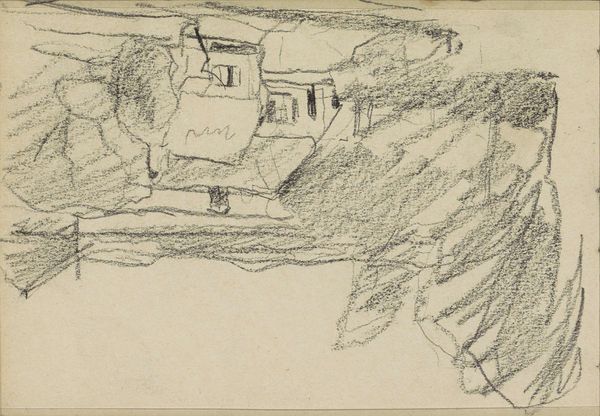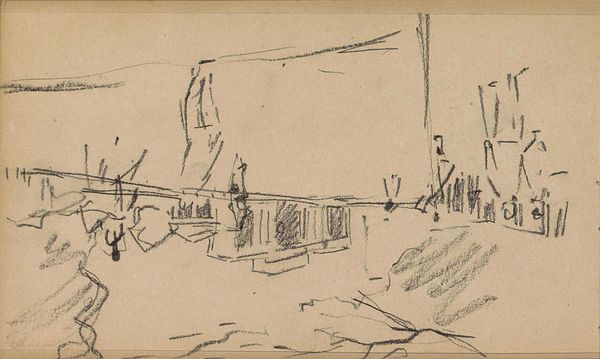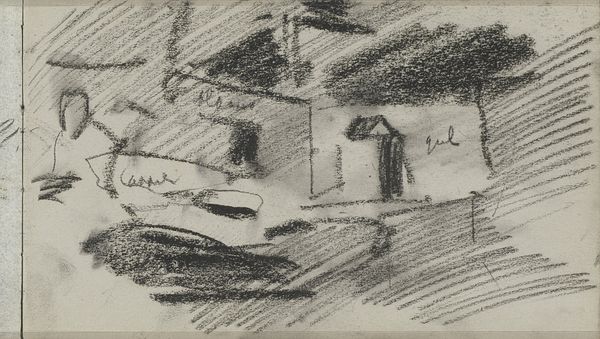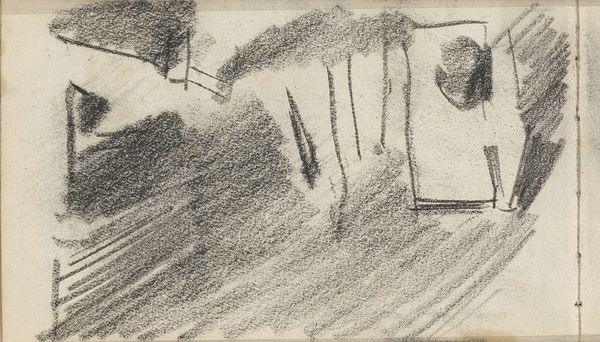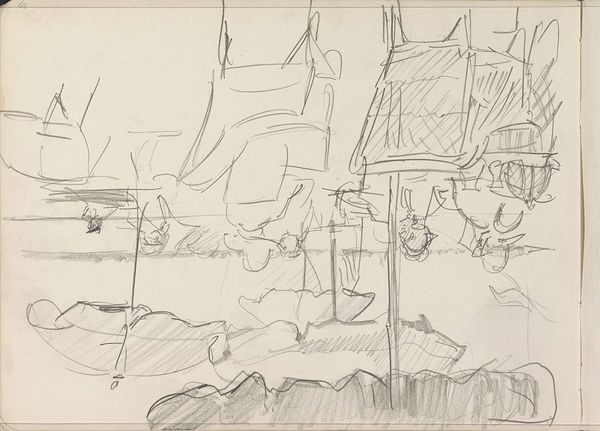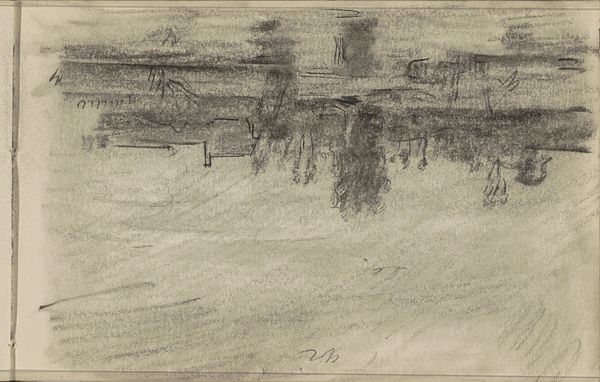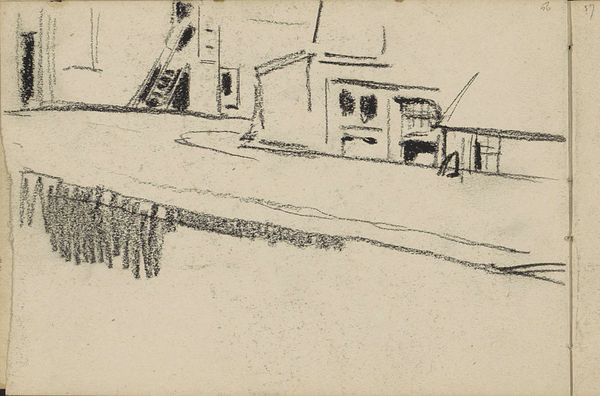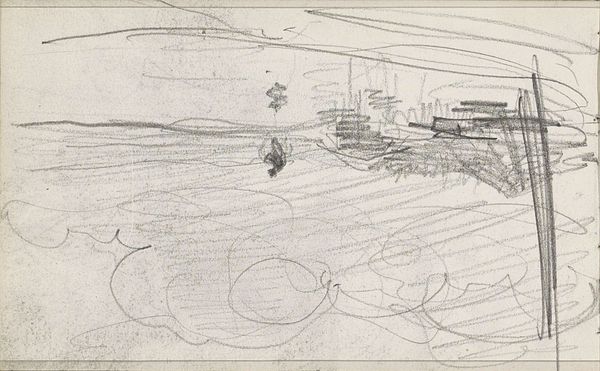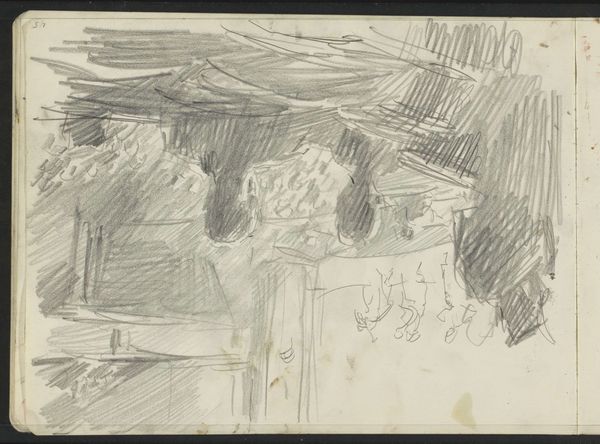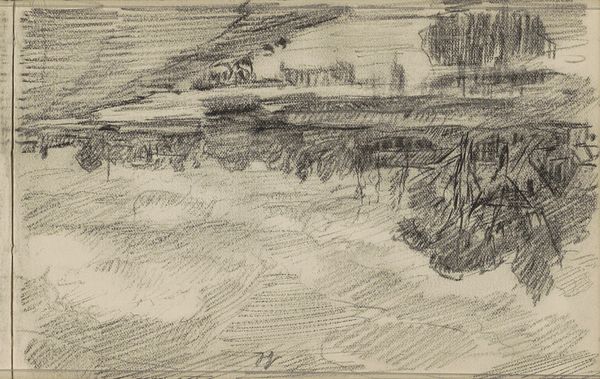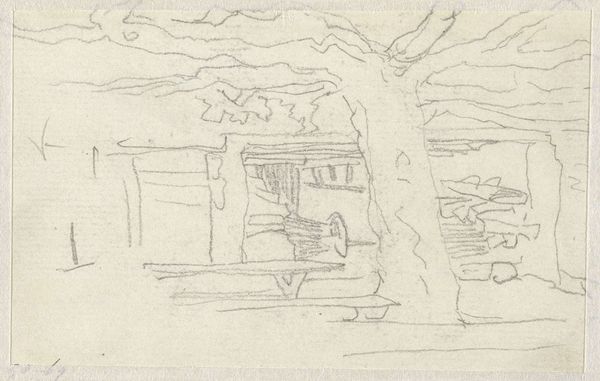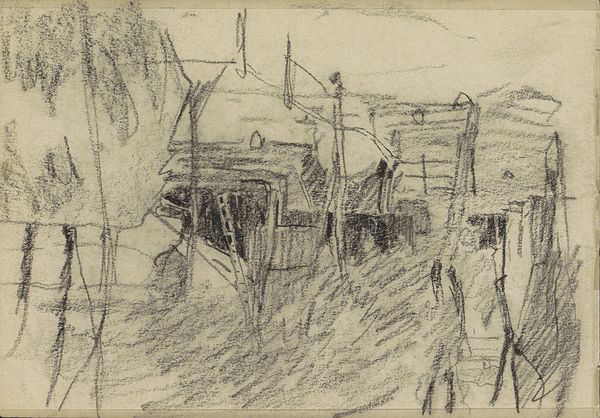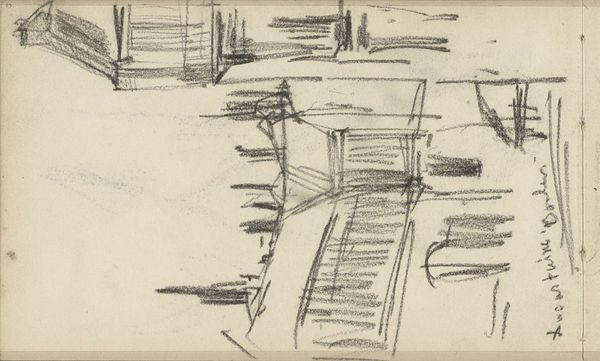
drawing, pencil
#
drawing
#
impressionism
#
pen sketch
#
sketch book
#
landscape
#
personal sketchbook
#
idea generation sketch
#
sketchwork
#
pen-ink sketch
#
pencil
#
sketchbook drawing
#
storyboard and sketchbook work
#
sketchbook art
#
realism
#
initial sketch
Copyright: Rijks Museum: Open Domain
Curator: Here we have "Studie," a drawing created by Anton Mauve sometime between 1848 and 1888. It resides here at the Rijksmuseum. What's your initial read? Editor: Immediate thought: ghostly. It's all suggestion and atmosphere, like a memory half-faded. That charcoal gray dissolving into the pale paper gives me a shiver – in a good way! The composition feels almost incidental, like catching a glimpse out the corner of your eye. Curator: It's quite evocative. The medium—likely pencil or perhaps charcoal—enhances that fleeting quality. The rough strokes create a sense of movement, particularly within what appears to be a thicket of trees. I'm drawn to the contrasting densities, the way the foreground dissolves compared to the mass of trees. This kind of sketching has a long history— think of preparatory drawings for tapestries—where understanding scale, the foreground dissolving into the whole, is key. Editor: A fleeting moment captured, I like that. I imagine Mauve standing on the edge of some windswept field, furiously trying to nail down what he’s seeing before the light changes, before the feeling disappears. It almost has the rawness of a field recording. The symbolism for me isn't direct but hints more at time’s relentless passing, with an interesting juxtaposition between that dark dense grove, contrasting that bare exposed ground at the foot. It definitely echoes a kind of vanitas moment. Curator: Vanitas certainly resonate. But it is equally tempting to explore themes around nature versus human intervention. See how some elements in the foreground like faint pathways are visible but dissolve within the wildness. We tend to attribute a conscious intent but it may simply capture light and depth and compositional exploration. These works provide insight into the artist’s processes but, perhaps also capture deeper social-cultural assumptions and relationships, around our environment. Editor: Absolutely. I’m walking away from this little sketch reminded how much can be said with very little. How, sometimes, suggestion is far more powerful than precise detail. And maybe how great art often comes from just letting the hand lead, responding intuitively to what the eye is taking in.
Comments
No comments
Be the first to comment and join the conversation on the ultimate creative platform.
